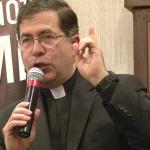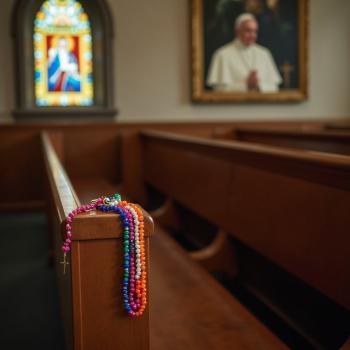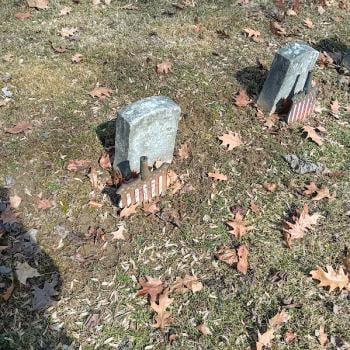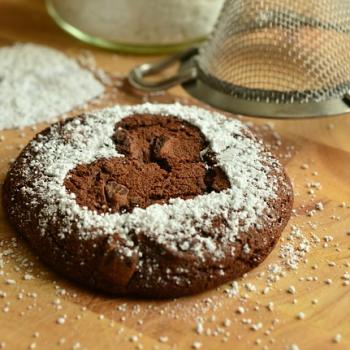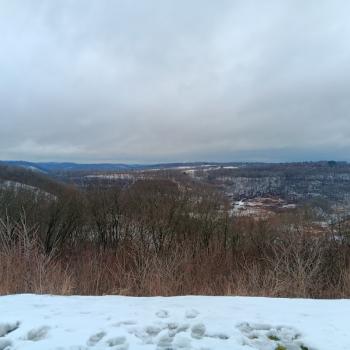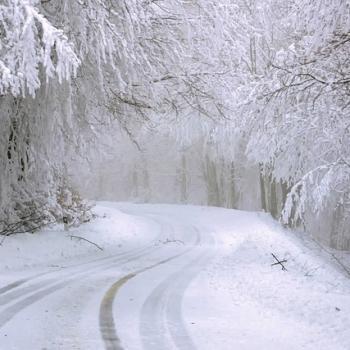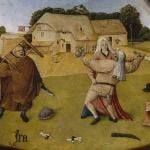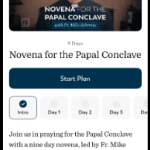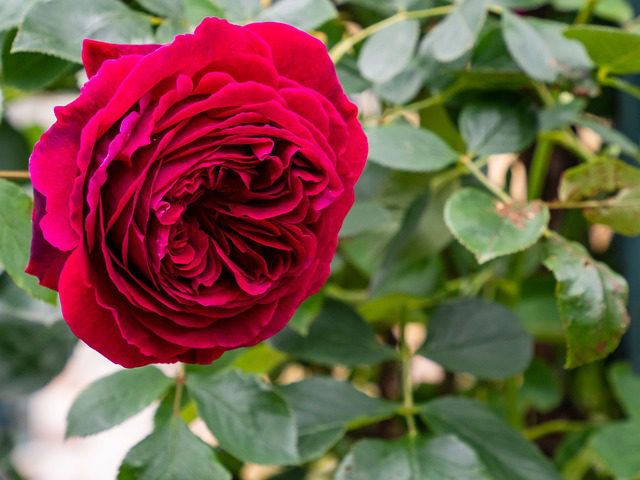
I haven’t seen the hawk since Sunday.
I’d asked, for a joke, if I could put some beef jerky in a bird feeder to befriend the red-shouldered hawk and see him regularly. But it turns out that the real way to attract hawks is to put up a songbird feeder, and the hawks come to eat the songbirds. I didn’t like that much. The hawk was fascinating, but I love songbirds as well. They remind me of my grandfather. I would like to live in the world where the lion lies down with the lamb and the baby plays by the adder’s nest, the world where you can love and admire both hawks and songbirds, but I don’t. I live in this one. That is the cause of all of my trouble.
It was cold as I went for my walk. We’ve had a worryingly warm January, but yesterday was bracing. It promises to be a nice cold February before we get our real spring.
I turned down the street past Tink’s Wall.
The wall looked so beautiful the day after Tink was murdered. So many neighbors had been friends with that harmless man. They’d gone out and bought all the red roses they could carry, since Tink’s favorite drinks had been Old English and Wild Irish Rose. They laced the stems of red roses through the holes in the pole of the stop sign. They taped red roses to the wall. They filled empty Old English cans and empty glass bottles for Wild Irish Rose with water and put flowers in those as well– red roses, scarlet and white carnations, Shasta daisies dyed pink and blue. Someone brought a Saint Jude votive candle, the kind you buy at a Mexican grocery. Somebody brought teddy bears and a Mylar balloon as if it was Tink’s birthday. Another person had stenciled “RIP TINK” on the wall itself. I had brought my red and white silk sunflowers from my icon corner and stuffed them in the square holes of the cinder blocks. We stood out there talking and praying together, even though we knew the murderer was at large and might come back.
And we kept that up all summer, bringing flowers and offerings for the dead. Every time the city cleaned up the memorial, we came back with more flowers and candles to decorate it again. And then, one day, we didn’t.
You can just see the last shreds of the “RIP TINK” that’s mostly been scrubbed off the wall. Everything else is gone. It’s just a cinder block porch on a rotting derelict building.
I don’t know if the police ever solved his murder. They claimed they did– someone was arrested. But I don’t remember that he ever went to trial. Maybe they got the wrong guy.
Maybe he’s still around here.
Maybe he’ll murder again– randomly, out of nowhere, the way he murdered Tink.
I wondered what would happen if I planted some red roses around Tink’s Wall. Whoever owns the building doesn’t do anything with it. The waiting list for demolitions is miles long. The city eventually removes memorials but they don’t pull weeds or trim bushes. Maybe I could put a climbing rose by every pillar that holds up the porch roof before anyone noticed I’d been there. A nice hardy rose. An old fashioned rose that still has the fragrance. The neighbors could forage the rose hips and make tea. If another person tried to sleep in Tink’s spot, they could use the vines of the climbing rose for a privacy curtain.
Across the street from Tink’s Wall is the tiny little cottage where I first met the Lost Girl. She and her children had been awakened by the gunshots the night Tink was murdered. She told me that cottage was a death trap. The roof leaked. The carpet was moldy. When she moved out, the owners couldn’t get another tenant. They put it up for sale for twenty-five thousand dollars, as is.
Standing there in the cold by Tink’s wall, daydreaming about climbing roses, I started to think how beautiful that tiny house could be, if anyone would take the the time. If I had the twenty-five thousand dollars I’d buy it myself and fix it up. I could plant roses there too, on a trellis growing up the side. I could put in a grape alley and a postage stamp orchard on the vacant lot next to it. The blossoms would attract the honeybees, and then there would be free fruit for everyone. I could hang bird feeders in the trees so the songs of the birds would entertain the whole block. But, of course, that might attract the hawks.
Between these two buildings, between my two daydreams of roses and songbirds, was a street flanked with cracked, muddy sidewalks.
On the sidewalk nearest me was a mess of white down feathers, scattered like confetti in the mud. Something had slaughtered a mourning dove.
The hawk had been here recently.
He was around here somewhere, biding his time.
I turned down Carnegie Street and then up Wellesley, until I got to the community garden.
It’s just a gray-brown mess now. The boxes are full of dead things. The skeletons of my giant sunflowers are still standing, the seeds all picked out of their discs. Neighbors threw their rotten Halloween pumpkins into the empty space, and no one cleaned them up. I hope the pumpkins grow and creep through the back portion. I hope anything wholesome grows there, to crowd out the pokeweed and poison ivy. But at the moment, nothing is growing at all.
This year I’m going to plant a whole box of herbs and heirloom tomatoes. Maybe I’ll sneak in in at the beginning of March and plant some onions and garlic as well: a whole pasta sauce in a wooden planter. Not just ordinary garlic but heirloom hardneck garlic. Not flavorless grocery store tomatoes but Stripeys and Golden Jubilees, Black Strawberries and bright orange Hillbillies. Purple and green basil. Oregano to harvest and oregano to let sprout into those delicate flowers. A rainbow of flavor as well as color. Next to it, I’ll plant a Four Sisters patch: gem glass corn or carousel corn. Hidatsa winter squash. Rattlesnake pole beans and scarlet runner beans. Mammoth gray stripe sunflowers at every corner. Off in the muddy place where nobody wants to plant things, a giant tower of potatoes.
I will hang bird feeders on the fence to distract the neighborhood birds from the seedlings until the sunflowers open up to feed them.
I hope the hawk doesn’t go after my songbirds.
I wish you could train a hawk to leave the songbirds in peace and just go after the rats and other pests, but that’s not their nature. Hawks are hawks.
This is the world we live in.
In this world you feed songbirds even though it brings on the hawks, or else you feed nobody at all. I know what I choose to do.
Mary Pezzulo is the author of Meditations on the Way of the Cross, The Sorrows and Joys of Mary, and Stumbling into Grace: How We Meet God in Tiny Works of Mercy.


